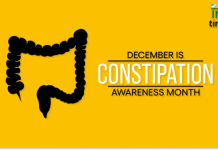
World Anaesthesia Day is celebrated annually on October 16th to commemorate one of the most significant advancements in medical history: the first successful use of anaesthesia. This day not only honors the discovery but also highlights the indispensable role of anaesthesia in modern healthcare. It is a time to reflect on how far we’ve come and acknowledge the professionals who ensure patient comfort and safety during surgeries.
History of Anaesthesia
The journey of anaesthesia began in the 19th century when the first documented use of ether for surgical purposes took place on October 16, 1846. Dr. William T.G. Morton, a dentist, administered ether to a patient at Massachusetts General Hospital, allowing for a painless surgery to remove a tumor from the patient’s neck. This historic event marked the beginning of modern anaesthesia, revolutionizing the field of surgery and making complex procedures safer and more bearable for patients.
Before this breakthrough, surgeries were often performed without pain relief, leading to traumatic experiences for patients. The advent of anaesthesia opened doors to more intricate surgeries and reduced the overall mortality rate during operations.
Why Celebrate World Anaesthesia Day?
Anaesthesia is the cornerstone of modern surgery, enabling complex medical procedures that were once unimaginable. World Anaesthesia Day serves as a reminder of its importance, not just for healthcare professionals but also for the general public. It also provides an opportunity to raise awareness about the vital role that anaesthetists and anaesthesia technicians play in ensuring the success and safety of surgical procedures.
The Role of Anaesthesia in Modern Surgery
Anaesthesia is much more than simply putting a patient to sleep. There are three main types of anaesthesia:
- General Anaesthesia – This causes complete unconsciousness and is used for major surgeries.
- Regional Anaesthesia – This numbs a large area of the body, like spinal or epidural anaesthesia.
- Local Anaesthesia – This is used for minor surgeries to numb a small area.
Anaesthesia has transformed surgeries, making them less painful and more efficient. With the help of anaesthesia, surgeons can perform intricate and life-saving procedures without causing discomfort to the patient.
The Evolution of Anaesthesia Techniques
From the early days of using ether and chloroform to modern intravenous and inhalational agents, anaesthesia has come a long way. Today’s techniques are highly refined and tailored to meet the needs of individual patients. Advances such as patient-controlled analgesia (PCA), where patients can manage their pain post-surgery, have made pain management more effective.
Anaesthesia Safety Today
Patient safety is the top priority in the field of anaesthesia. Anaesthetists undergo rigorous training to manage not only the anaesthesia itself but also the patient’s vital functions during surgery. In addition, innovations in monitoring devices and anaesthetic drugs have significantly reduced the risks associated with anaesthesia.
Global Celebrations and Awareness
World Anaesthesia Day is celebrated across the globe with events, seminars, and awareness campaigns. These events are aimed at educating both medical professionals and the public about the advances and challenges in anaesthesia. Hospitals, medical schools, and anaesthetist associations often host workshops to highlight the importance of anaesthesia in healthcare.
Key Organizations Supporting World Anaesthesia Day
One of the key organizations behind World Anaesthesia Day is the World Federation of Societies of Anaesthesiologists (WFSA). Founded in 1955, WFSA supports anaesthetists worldwide by providing education, training, and research opportunities. Other organizations such as local anaesthesia societies also participate in this annual celebration, spreading awareness about the critical role of anaesthesia in patient care.
Challenges in the Field of Anaesthesia
Despite technological advancements, there are still challenges in the field of anaesthesia, particularly in low-income countries. In many regions, there is a lack of trained anaesthesia professionals, and access to modern equipment and drugs is limited. World Anaesthesia Day serves as a platform to advocate for better training and resources for anaesthetists worldwide.
Technological Innovations in Anaesthesia
The field of anaesthesia has seen remarkable innovations, from advanced anaesthesia machines to digital monitoring systems. Artificial intelligence (AI) is also making strides in anaesthesia, helping professionals predict and manage patient responses to anaesthetic drugs more effectively.
The Future of Anaesthesia
The future of anaesthesia looks promising with ongoing research into new drugs and techniques. Innovations in nanotechnology and AI may further enhance the precision and safety of anaesthesia, making surgeries even more efficient and patient-centered.
The Role of Anaesthetists Beyond the Operating Room
Anaesthetists don’t just work in the operating room. They play a crucial role in pain management and critical care, helping patients manage chronic pain and providing life-saving care in emergency situations.
How You Can Participate in World Anaesthesia Day
There are several ways to get involved in World Anaesthesia Day. You can attend local events, participate in social media campaigns, or simply educate yourself and others about the importance of anaesthesia in healthcare.
The Contribution of Anaesthesia to Public Health
Anaesthesia has drastically improved the outcomes of surgeries and other medical procedures, contributing significantly to public health. By enabling pain-free operations and improving surgical outcomes, anaesthesia has saved countless lives and enhanced the quality of life for millions.
Conclusion
World Anaesthesia Day is more than just a celebration of a medical achievement; it’s a recognition of the crucial role anaesthesia plays in modern healthcare. It reminds us of the dedicated professionals who ensure patient safety and comfort every day. As we look to the future, anaesthesia will continue to evolve, making surgery safer and more accessible for people worldwide.
FAQs About World Anaesthesia Day
- When is World Anaesthesia Day celebrated?
World Anaesthesia Day is celebrated on October 16th each year. - Who started World Anaesthesia Day?
World Anaesthesia Day was initiated by the World Federation of Societies of Anaesthesiologists (WFSA) to commemorate the first successful use of ether anaesthesia. - How can I celebrate World Anaesthesia Day?
You can celebrate by attending local events, spreading awareness on social media, or educating yourself about the importance of anaesthesia. - What are the different types of anaesthesia?
The three main types are general anaesthesia, regional anaesthesia, and local anaesthesia. - Is anaesthesia safe for everyone?
While anaesthesia is generally safe, it does carry some risks, especially for individuals with certain medical conditions. Anaesthetists work to minimize these risks.



































